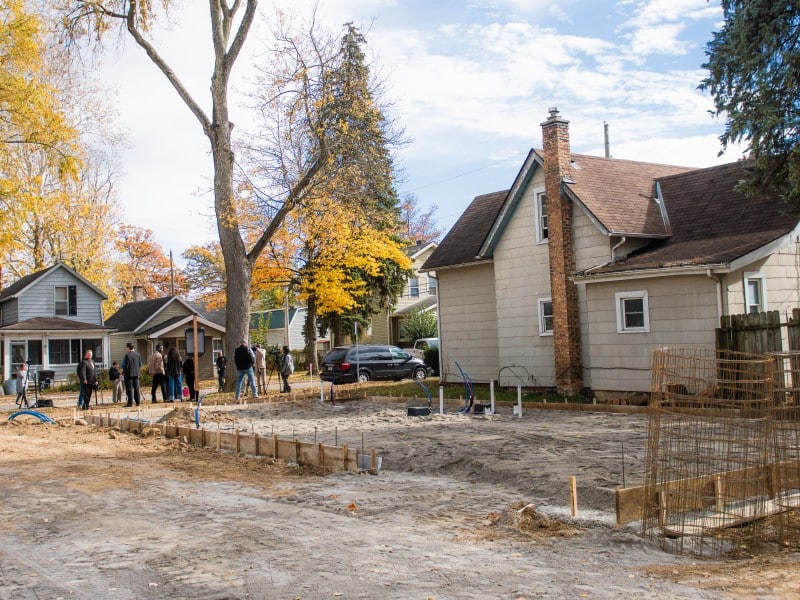Pandemic unemployment benefits have ended in Indiana, but workforce challenges persist
A deeper look at the reasons behind the region’s scramble to fill jobs—and how companies are evolving for the future.

This story is part of Input Fort Wayne’s Solutions Series, made possible by support from the United Way of Allen County, the NiSource Foundation, NIPSCO, Brightpoint, and others in Northeast Indiana. The 10-part, 10-month series explores how our regional community is addressing residents’ essential needs during the pandemic. Read the first story here.
***
A quick search for job postings in Fort Wayne on the career website Indeed.com yields more than 10,000 results. Here, you’ll find open positions ranging from HR directors to fast-food restaurant management. For each open role, there’s an internal struggle to fill a vacancy while keeping existing workers happy.
Rachel Blakeman is familiar with this dance. As Director of the Community Research Institute at Purdue University Fort Wayne, her team is contracted by various companies to conduct research.
“Historically, we’ve done a lot of work on economic development and workforce development,” Blakeman says. “That has shifted over the past few years to some grant administration and some other things, but I still keep an eye on the labor market.”

So when the pandemic hit last spring, naturally, she was interested in the economic impact.
“When the first numbers came in, it was eye-popping,” Blakeman says. “The most recent experience we’ve had with an economic downturn, of course, was the Great Recession. So there was reason to believe that some of the fundamentals of the Great Recession could play out again, giving us a long-term downturn in the stock market and unemployment for years to come.”
But to Blakeman’s surprise: “None of that came true,” she says. “In fact, the stock market has doubled from where it was (after that) initial dip.”

Now, 18 months after the pandemic began, there are more jobs than there are people to fill them, and the reasons behind this imbalance are many.
Challenges in Northeast Indiana’s labor market
A July article in Forbes proclaims “the economic data is clear.” Job openings in the U.S. exceeded an unprecedented 9.3 million at the end of April, according to the Bureau of Labor Statistics. Employers in the U.S. are having a hard time getting employees to come back to work.
In Indiana, Pandemic Unemployment Assistance (PUA) has been a hot topic of discussion and legal battles throughout the crisis. Opponents claim it’s preventing people from returning to work, while supporters say it’s giving workers stability and the chance to choose better jobs.
Indiana’s $300-a-week PUA benefits expired on Sept. 4, causing about 90,000 Hoosiers to lose their eligibility, while an additional 20,000 kept collecting their regular state-supplied benefits, but lost the additional PUA boost.
In anticipation of this change, some Hoosiers did return to work, according to the Indiana Department of Workforce Development. But it is now nearly a month later, and employment challenges persist in Northeast Indiana.
Along with the challenges many communities across the U.S. face, Blakeman says there are unique factors at play in the region that further compound employment issues here. Specifically, she cites the droves of people leaving the workforce permanently during the pandemic for retirement.
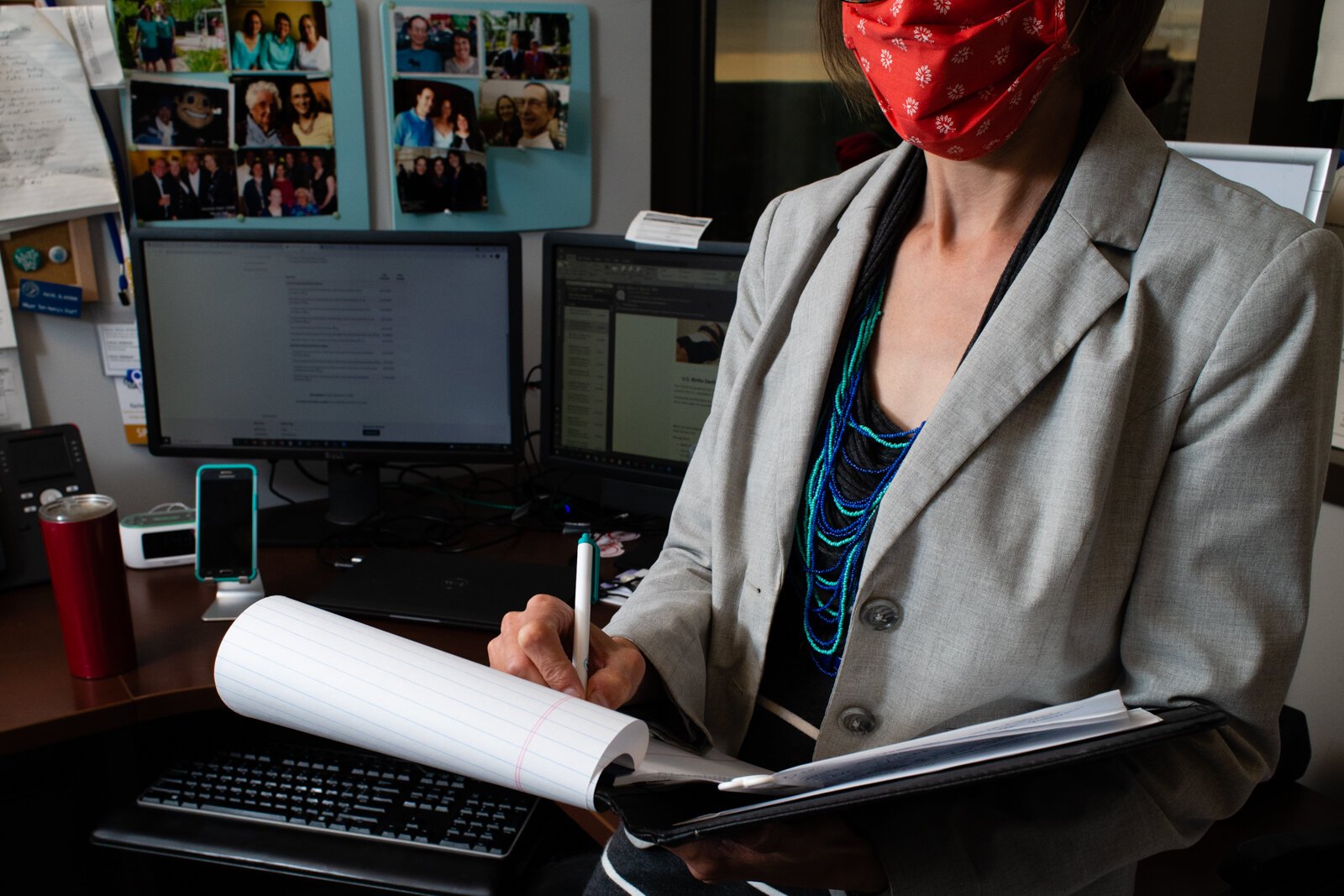
For those approaching a retirement decision in 2019, the crisis may have expedited their move.
“For example, I know somebody who was planning to retire this summer and retired six months early,” she says. “It might not seem huge in the scheme of things, but when you start doing that thousands of times over regionally, you can quickly see that you’re going to be running out of people to work.”
People who are unemployed or underemployed and waiting on the sidelines also contribute to this imbalance, Blakeman says. While the vaccine greatly reduces the chance of severe infection and death, some would-be workers still aren’t comfortable going back to work until the pandemic has a clear end in sight.
“I think there’s another group of potential workers who are staying on the sidelines and are going to be there for a while,” she says.
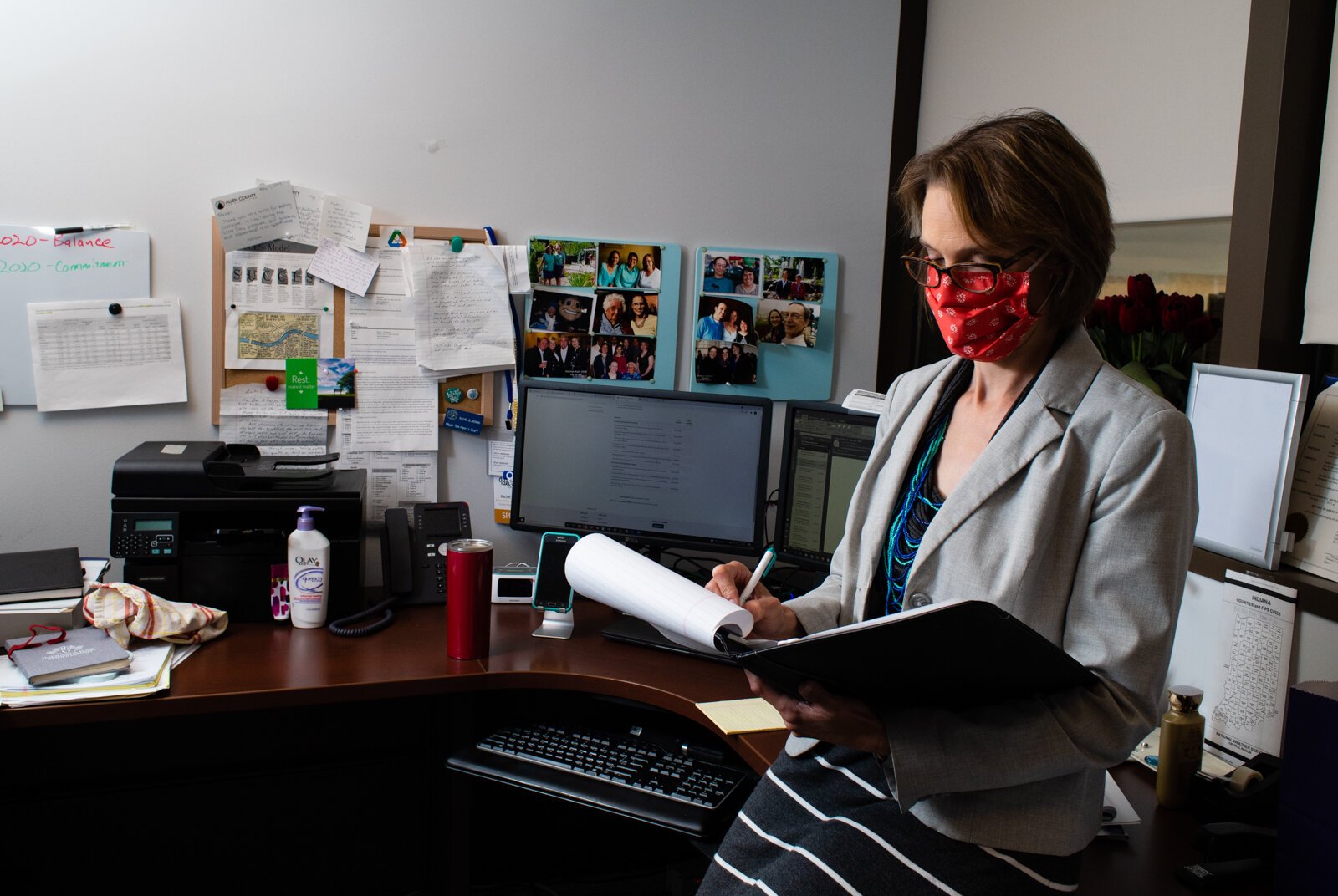
This group includes mothers with school-aged children, who might choose to stay home and out of the job market due to the prevalence of virtual schooling needs that arise, as well as their partner’s increased ability to work overtime and provide for the family.
“If you are somebody who’s been able to figure out how to make your household finances work with one income earner, and then they have an opportunity to earn some good overtime, they might be willing to make that sacrifice,” Blakeman says.
Another factor keeping potential candidates out of the job market in Fort Wayne is likely wages.
The wage gap in Northeast Indiana
While Northeast Indiana is often touted as an “affordable place to live,” wages in the region have also historically lagged behind national averages, even before the pandemic began.
In 2019, the average wage in Fort Wayne was 79 cents on the dollar compared to the national average. And out of 381 metro areas, Fort Wayne ranked No. 172 in wages. Then in 2020, that figure dropped to 78 cents on the dollar, yet the city’s ranking rose to No. 177.
Despite this modest improvement, Blakeman says a bigger-picture view is essential to understanding the current labor shortages.
“On average, you can expect that if you’re working in Fort Wayne right now, you are receiving a wage penalty,” she says. “I think that for a long time, we have told ourselves that a reduced paycheck is okay because our housing costs are so much lower. And I looked at the housing costs, and we do enjoy lower housing costs on average than the national figures. But we don’t spend all of our paychecks on housing. It’s recommended that we spend no more than 30 percent on housing.”
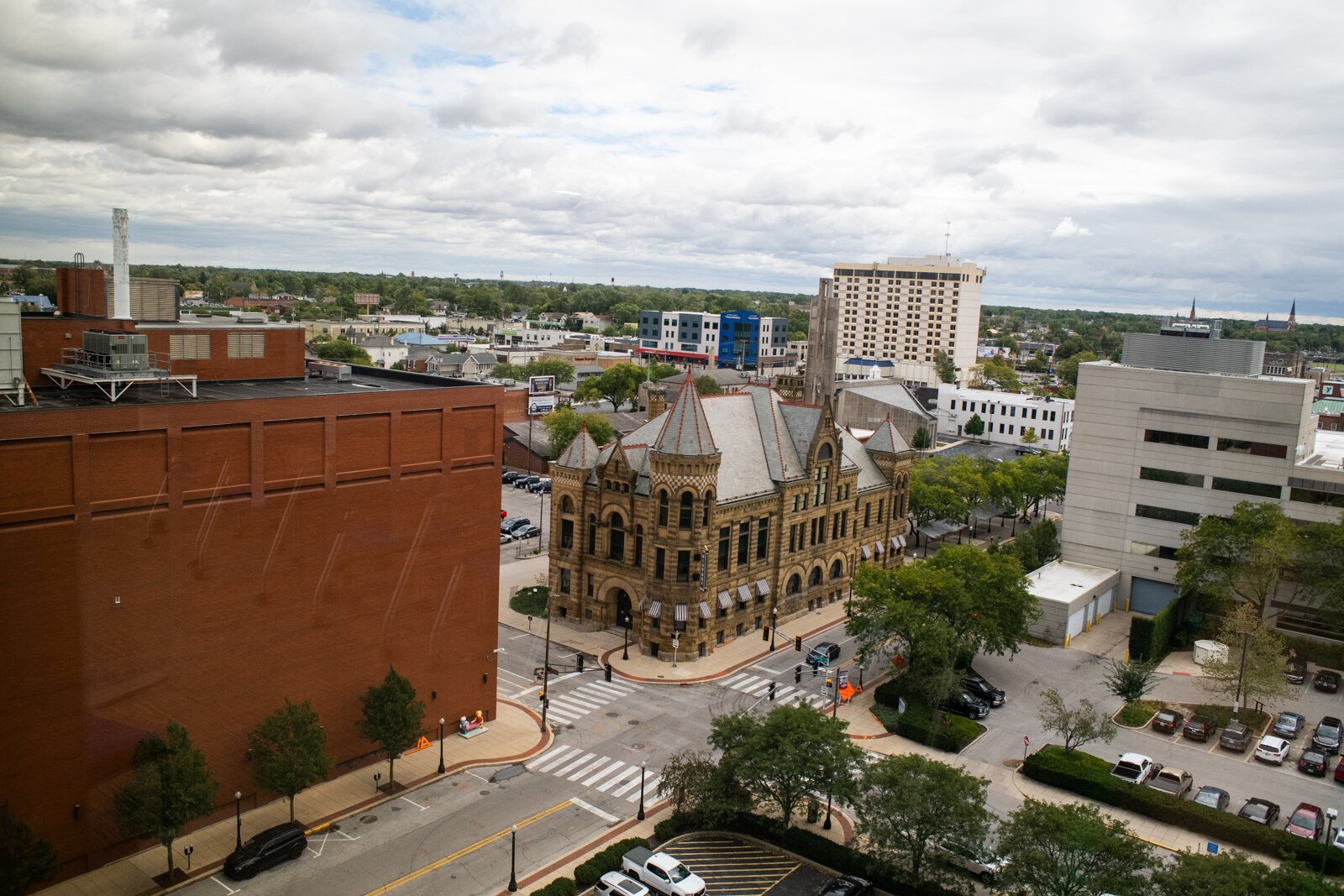
This wage deficit becomes clear when you take factors, like inflation, into account. Blakeman offers a few specific examples. Say you go to purchase a new Chevy Silverado pick-up truck made right here in Fort Wayne. You don’t get a discount on this product because you earn “Fort Wayne level wages,” she says. The same goes with a trip to Disney World, and so on.
Over time, that 78 cents on the dollar shortfall compounds and can even result in a lower monthly Social Security check upon retirement.
For many, these indicators are signs that the Hoosier state doesn’t just need to get people back to work; it needs to change its approach to employment and workforce development. From what Blakeman has seen, part of this shift needs to happen before employees even reach the workforce, while they are in the K-12 education system.
“What we’ve seen in recent years in pre-pandemic data, is that that message of ‘too many kids are going to college’ is really resonating with our high school students, and they’re not going to college,” Blakeman says. “This does not bode well for our future because job growth and higher wages come from higher-skilled jobs.”
While the trades represent a portion of Indiana’s economy and workforce, highly skilled jobs in fields like science, technology, engineering, and math will be needed to prepare students for careers of the future.
Employers and community leaders also have a role to play in supporting a stronger economy.
Increasing collaboration and inclusivity
As President at Northeast Indiana Works, Edmond O’Neal is concerned by the region’s employment outlook. Northeast Indiana Works is the region’s non-profit workforce development organization, which provides public and private financial and employment resources for education and skills training to meet the needs of regional industries.
According to O’Neal, the onset of the pandemic resulted in a tipping point of sorts.
“We had a tight labor market pre-COVID,” he says. “There were a number of workers who were within a 10-year window of essentially being eligible to retire or age out of the workforce. In fact, one-in-four workers right now are eligible for retirement in Northeast Indiana.”

In addition to an aging workforce, anemic growth and migration rates in the region don’t help the cause of expanding the workforce. Fort Wayne’s population has increased in recent years, but only slightly compared to its workforce deficit.
“There’s definitely some challenges for employers in finding adequate labor pools, and then also in retaining them,” he says. “It’s a little bit of an arms race, so to speak. Employers are adjusting wages because they have to keep up as the wage adjustments happen. It almost creates a buyer’s market for employees because they know they can (make more money at the employer down the street). So there are definitely challenges on the front end from a hiring perspective and significant challenges in retention.”
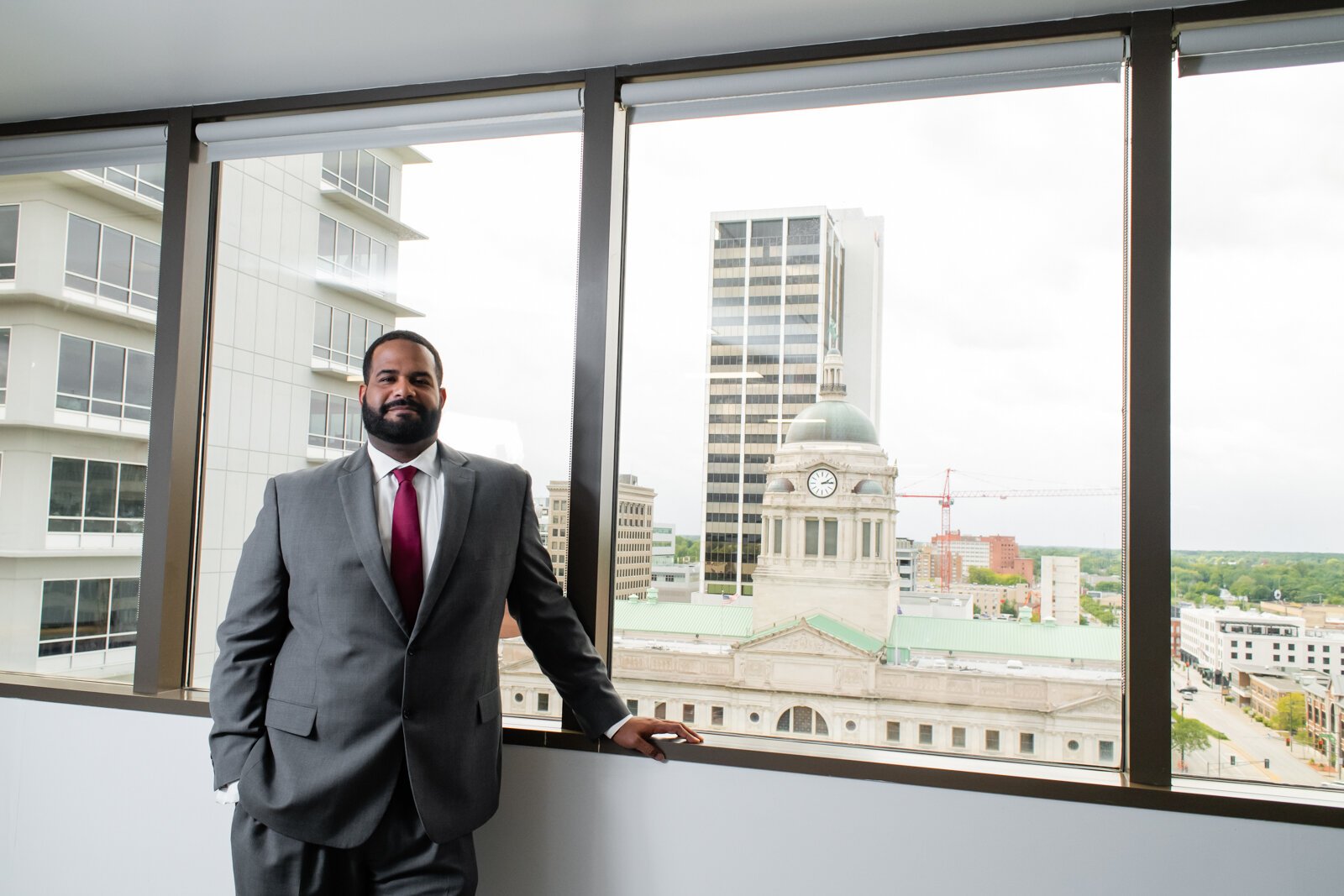
Manufacturing and healthcare—two of the largest industries in the Northeast Indiana region—are particularly feeling the pandemic pinch, says O’Neal. When there’s a labor shortage, it then overworks the existing workforce, and burnout happens more easily. In response to this situation, O’Neal says some employers are getting creative to incentivize workers to come on board and, hopefully, stay put. That might mean a flexible schedule, signup bonuses, referral bonuses, and other programs to attract and retain talent.
If you ask O’Neal, these creative solutions shouldn’t be relegated to times of crisis. Rather, employers should be open to new strategies and hiring populations of people that might be historically overlooked. This might include people with mental or physical disabilities and/or criminal backgrounds.
“Employers are looking to partner more with community-based organizations to try to understand how to get direct connectivity and engagement with people,” he says.
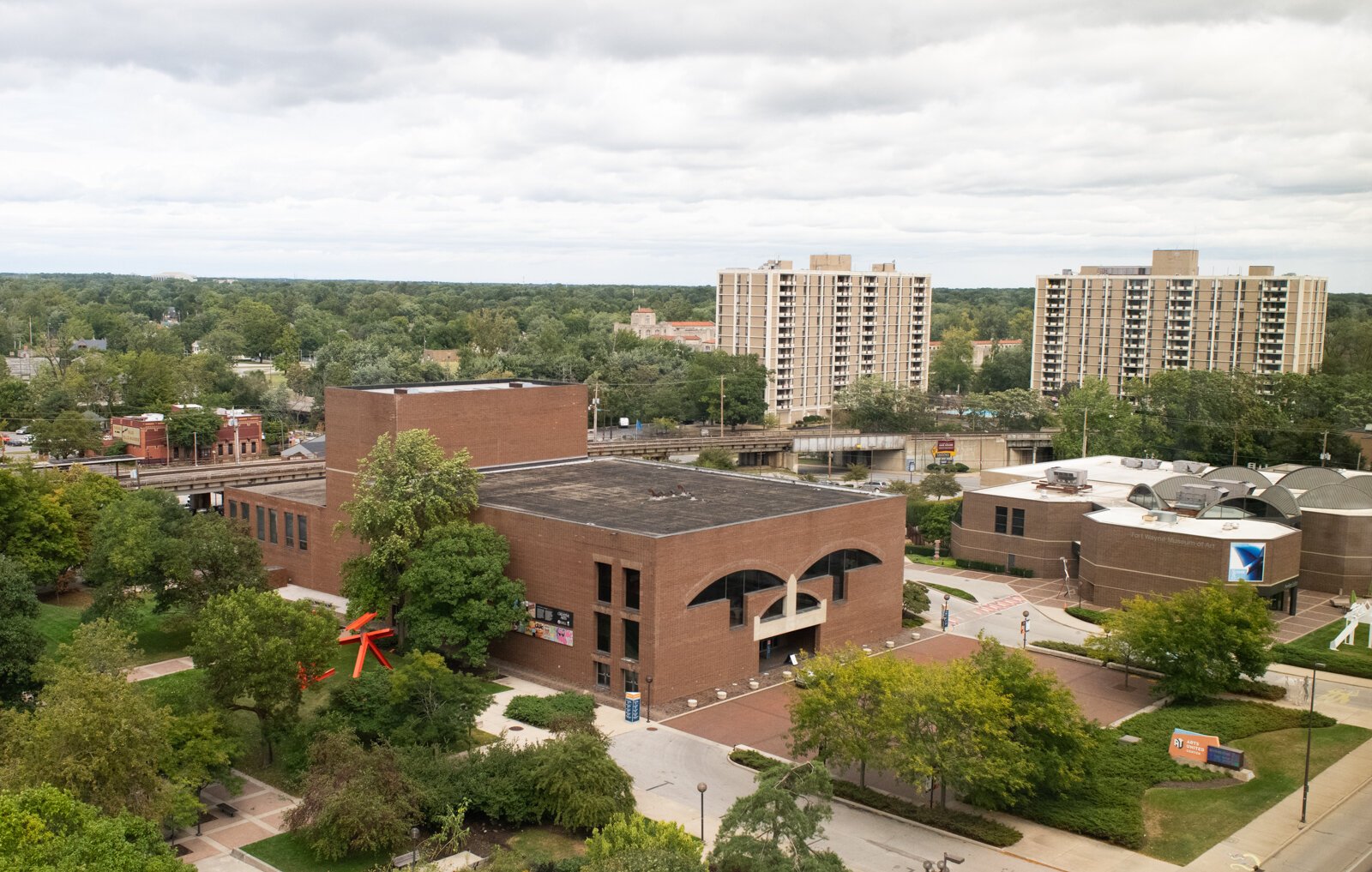
This activity goes beyond the employer level, too. He feels confident in the ability of regional leaders to effect change that will benefit Fort Wayne’s talent pool—not only during the pandemic, but for the future.
“We have a number of business leaders, ambassadors, and community-based organizations that are working in lockstep, hand-in-hand, trying to coordinate efforts to address our talent concerns,” he says. “There are a number of training opportunities in Northeast Indiana, where people can go to skill up, to make sure they have skill sets that match open opportunities, and that they’re available jobs.”
One organization making changes to improve its own talent pipeline is Fort Wayne Metals.
Re-strategizing how to recruit talent
Holly Christianson, Human Resources Manager at Fort Wayne Metals, knows a thing or two about job vacancies. She says right now it’s hard to keep up with the increased demand and need for skilled labor, despite having desirable jobs open.
“Before the pandemic, on the production side, we had a queue,” she says. “There was a long waiting period for people to get into Fort Wayne Metals, so they would take our assessments for production roles, come into an interview, and provided they got the thumbs up from the whole panel, they’d be placed into this queue. Then, when we had an opening, we would reach out and offer them a position, and it might be months.”
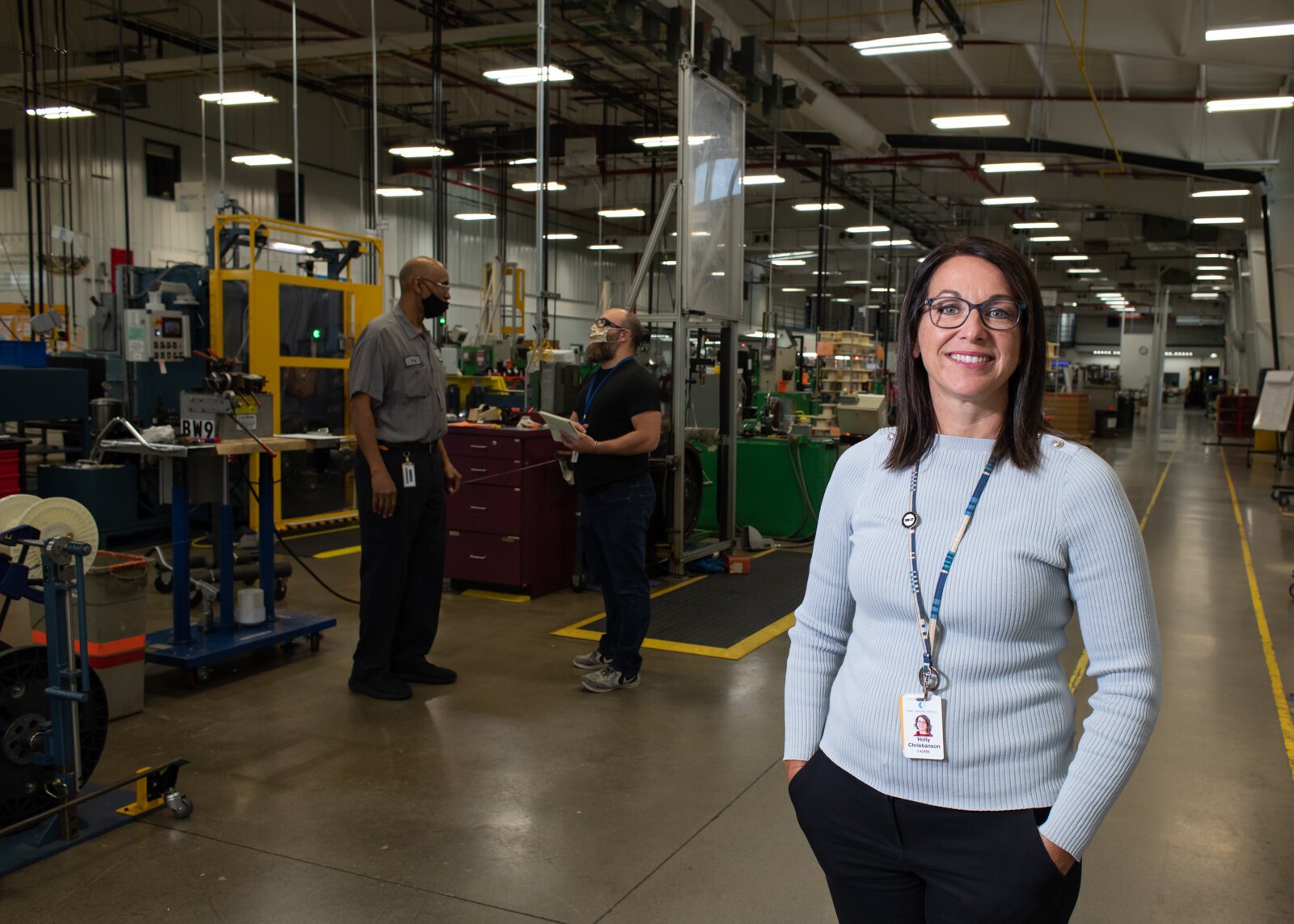
Today, amidst the COVID-19 pandemic, the situation is completely different.
“We absolutely have production openings that we’re trying to fill as quickly as we can,” Christianson says.
The situation is more complicated than it might seem on the surface level due to the sheer numbers. In pre-pandemic times, for example, for every 100 applications Fort Wayne Metals received for production jobs, they might hire one employee.
“Now, we’re receiving fewer applications,” she says. “It’s true—everyone is experiencing the war for talent. We’re all doing the best we can.”
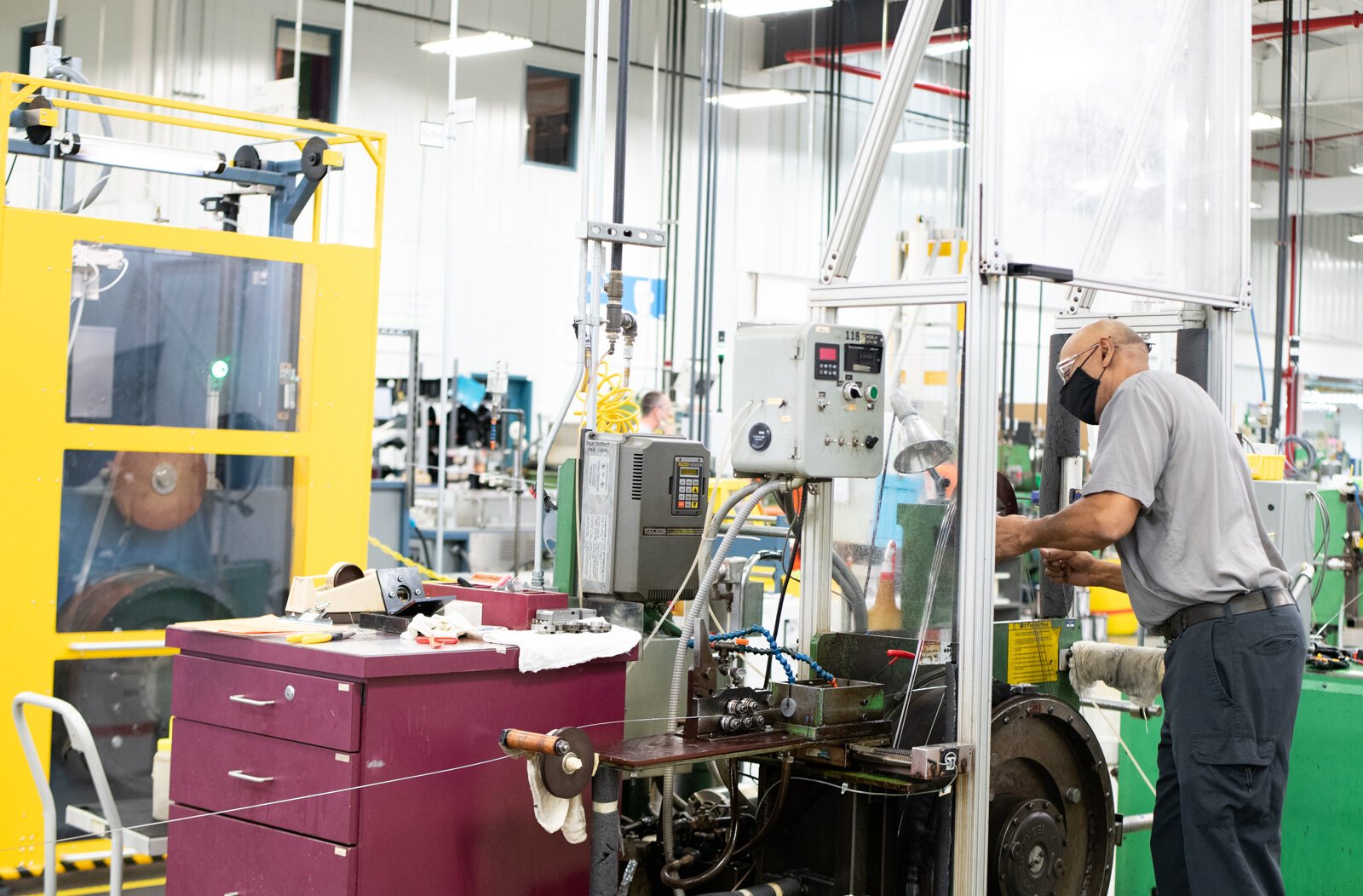
Christianson says, as an HR professional, it’s easy to lose sight of the bigger picture and get caught up in the day-to-day struggle. However, her colleagues and cohorts are a hardy bunch, and she’s confident in their abilities to mitigate the circumstances.
“This is a tough time for all of us,” she says. “It requires us to… consider what creative things we can do to get a person to stop and read a job posting. And so, we do a lot of, ‘Let’s try this, and see if it turns on the faucet.’ If it doesn’t, we might try something different.”
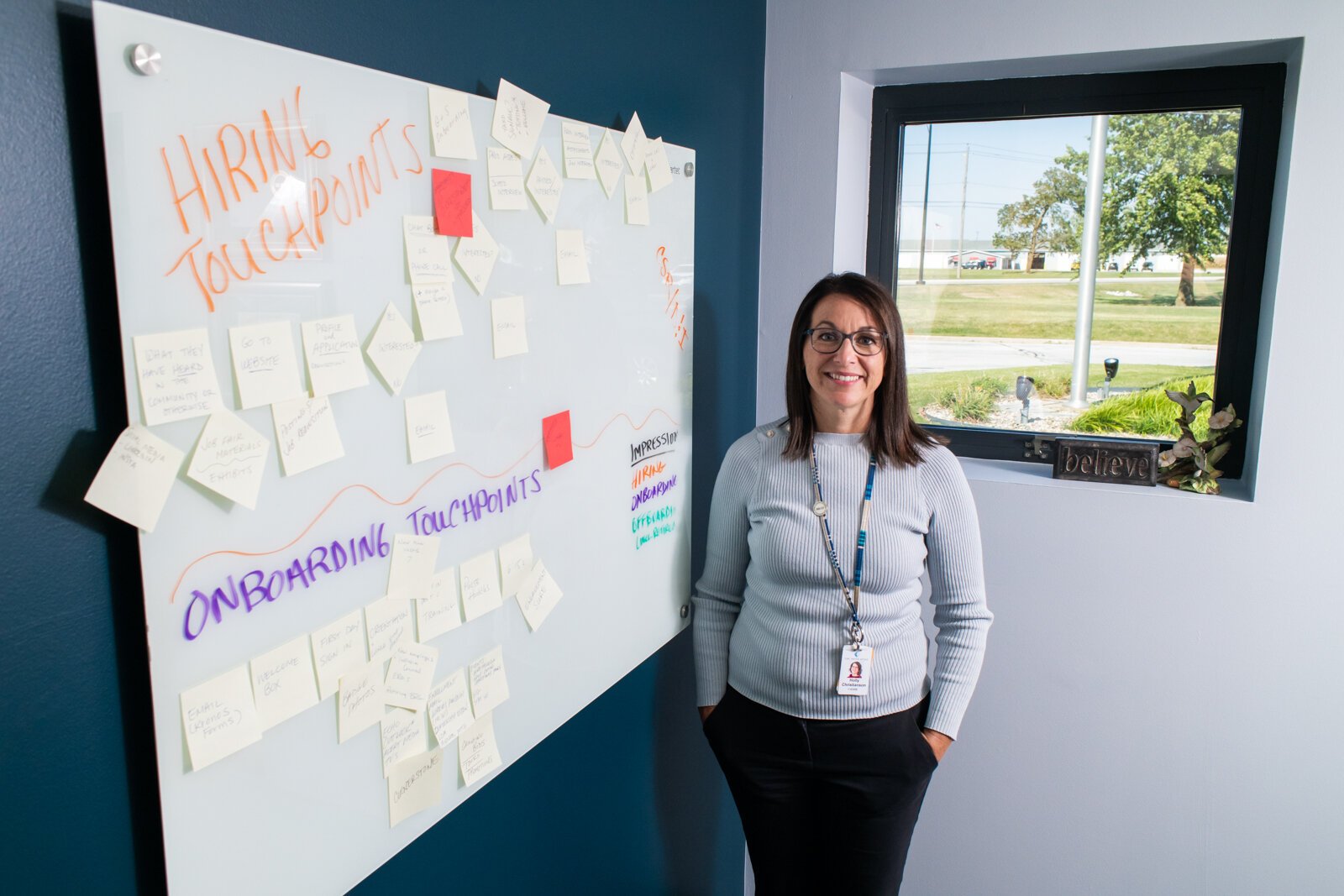
Novelty is not a foreign concept at Fort Wayne Metals either. Christianson says the company is innovative and willing to adapt to the changing times. One recent example?
“I think we should mention that during the pandemic, we all witnessed and experienced in our own way, the death of George Floyd,” she says. “We felt a call to action, so in June of 2020, we initiated an Inclusion Council, with the goal to better drive diversity and inclusion through our recruitment processes and the whole organization.”
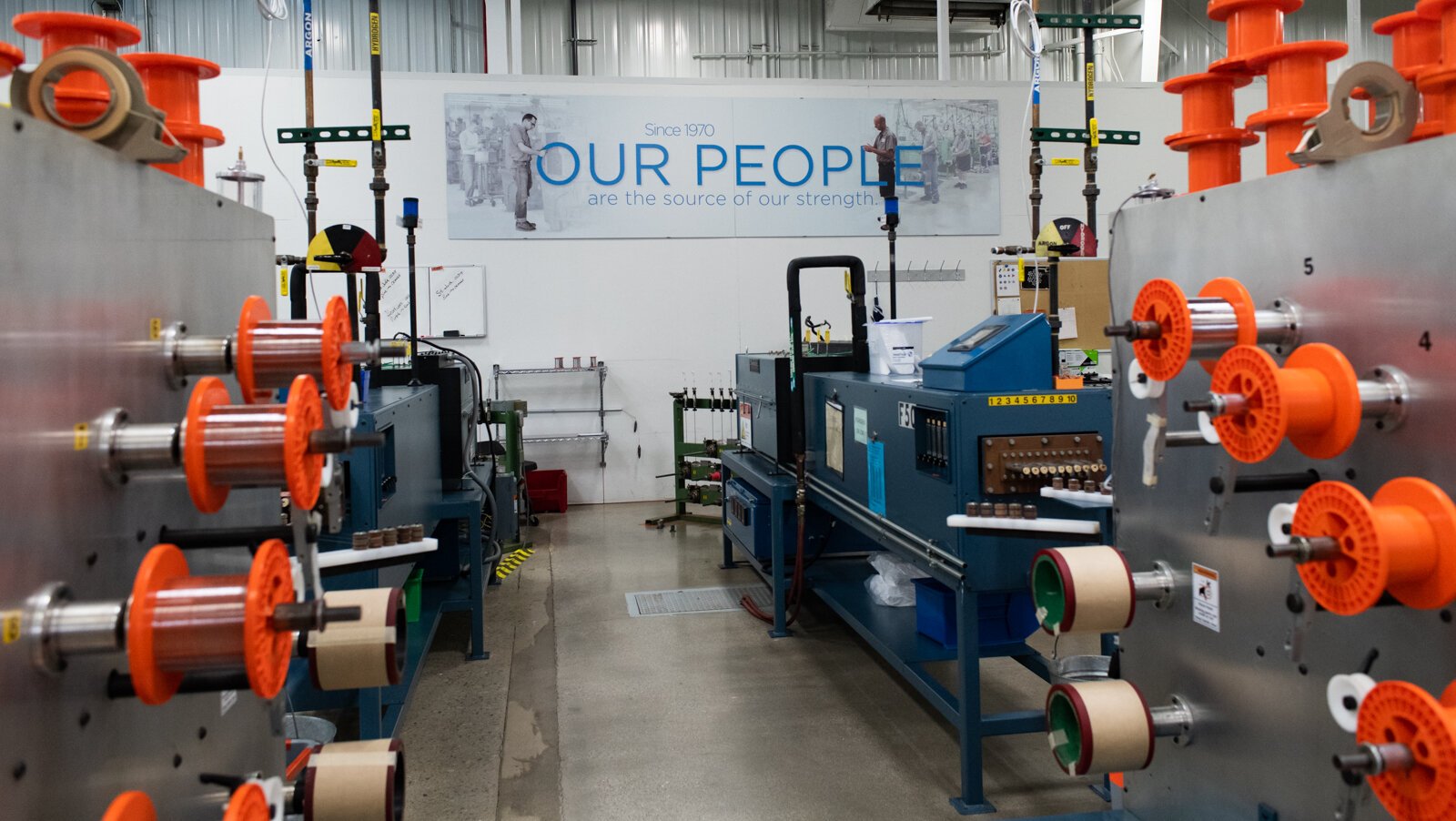
On a more micro level, Christianson says Fort Wayne Metals is also working internally to offer a more robust recruitment strategy. For instance, they’ve recently hired someone to be the subject-matter expert for production recruiting and hiring. They have also posted a talent sourcing supervisor position, which will be a brand-new role for the company going forward.
Whatever the future holds for Fort Wayne Metals and other regional employers, Christianson speaks with an air of solidarity.
“It’s important to me to acknowledge this isn’t unique to Fort Wayne Metals,” she says. “We are literally all in this together, as far as our profession goes. Despite the number of job openings we’re managing, and the pains we’re feeling through this very weird and new chapter, I think we’re mindful that some companies are having an even harder time.”
Mitigating uncertainty
Across the board, the pandemic has further exposed inequities, empowered workers to increase their demands, and left many employers scrambling to fill jobs.
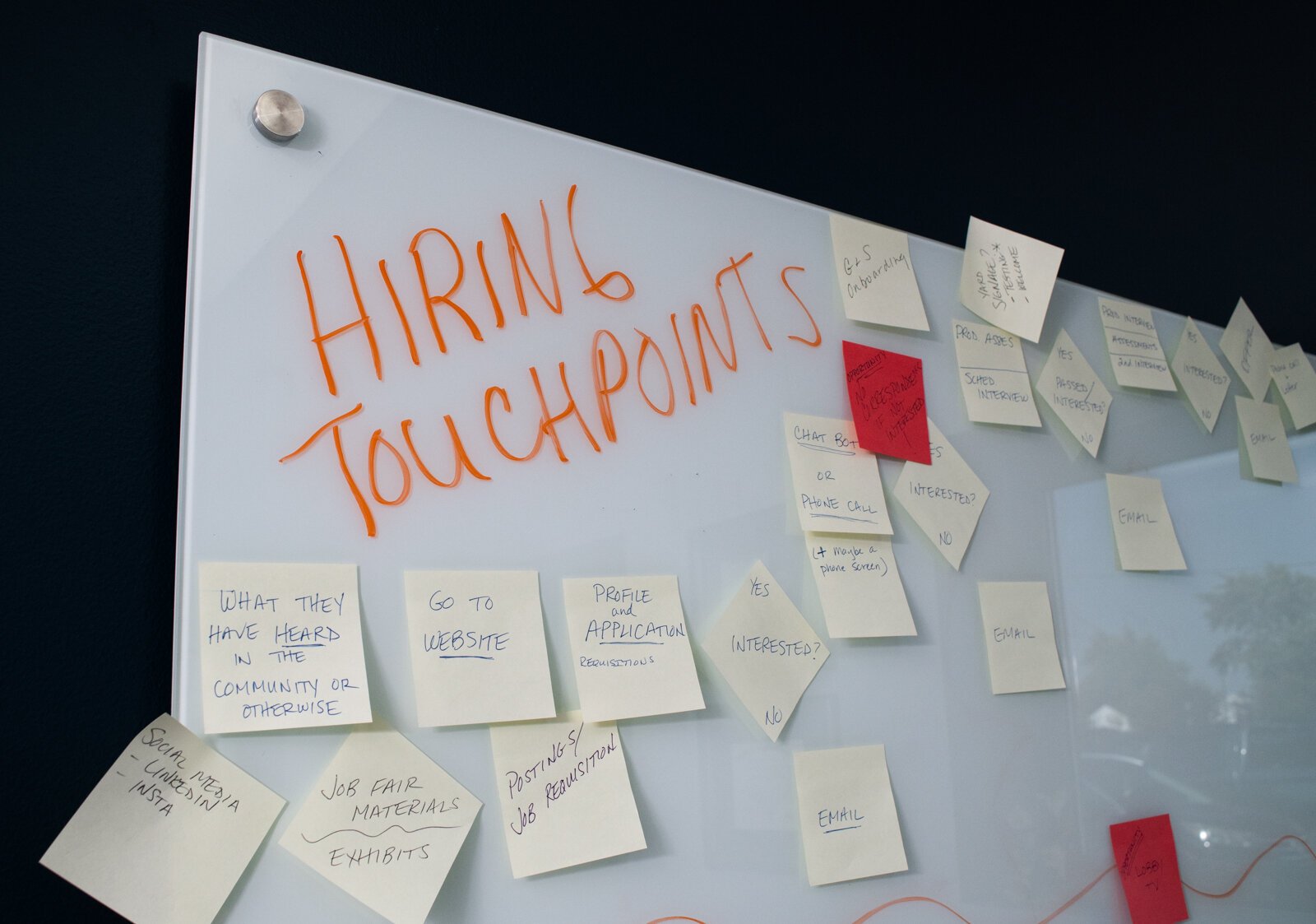
Looking at the situation from an outsider’s perspective, Blakeman says one solution to improving the economy for many workers and employers is getting everyone to comply with the federal government’s safety guidelines. This can mitigate the hovering uncertainty of the pandemic.
“Looking at it from an economic development standpoint, people need to get vaccinated and wear masks,” she says. “If you’re not willing to do both of those, then we are going to continue to be fighting this virus in ways that are not healthy. The virus and its mitigation are economic development issues.”




